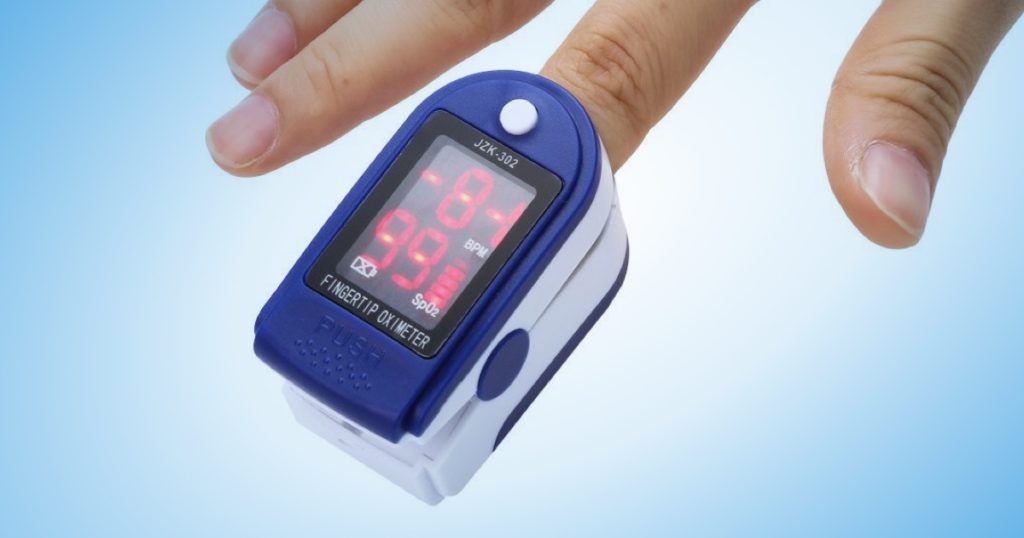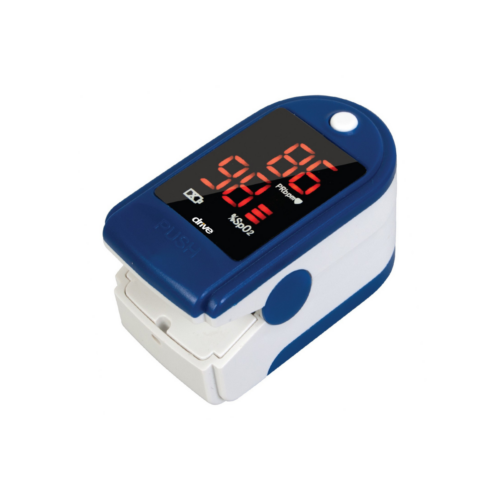What is pulse oximetry, and why is it important in COVID-19?
Many patients with COVID-19 disease have low oxygen levels even when they are feeling well. Low oxygen levels can be an early warning sign that medical intervention is needed. Pulse oximetry is the method that measures the percentage of blood hemoglobin carrying oxygen. Many consider it a “vital sign,” like blood pressure. A beam of red light is passed through the fingertip by using a device called a pulse oximeter. Oxygen level, or saturation (SpO2), is determined by measuring how much light is absorbed as it passes through the fingertip.
What are normal levels, and when should
I worry? Normal SpO2 is usually at least 95%. Some patients with chronic lung disease or sleep apnea can have normal levels of around 90%. Medical professionals should be consulted if a patient with suspected or confirmed COVID-19 has SpO2 ≤90%. Supplemental oxygen or other treatments might be needed. If oxygen is available, it should be used for oxygen saturation levels <85%. Levels between 80–90%, and levels that are decreasing over time, often indicate severe disease and the potential for the rapid decline.
KEY POINT: If a patient with COVID-19 has SpO2 ≤90%, refer for further evaluation and possible treatment.
If you’d like, you can purchase a pulse oximeter from our online shop
Health Monitors




Pingback: Elevating Women’s Health! - Health nd Fitness